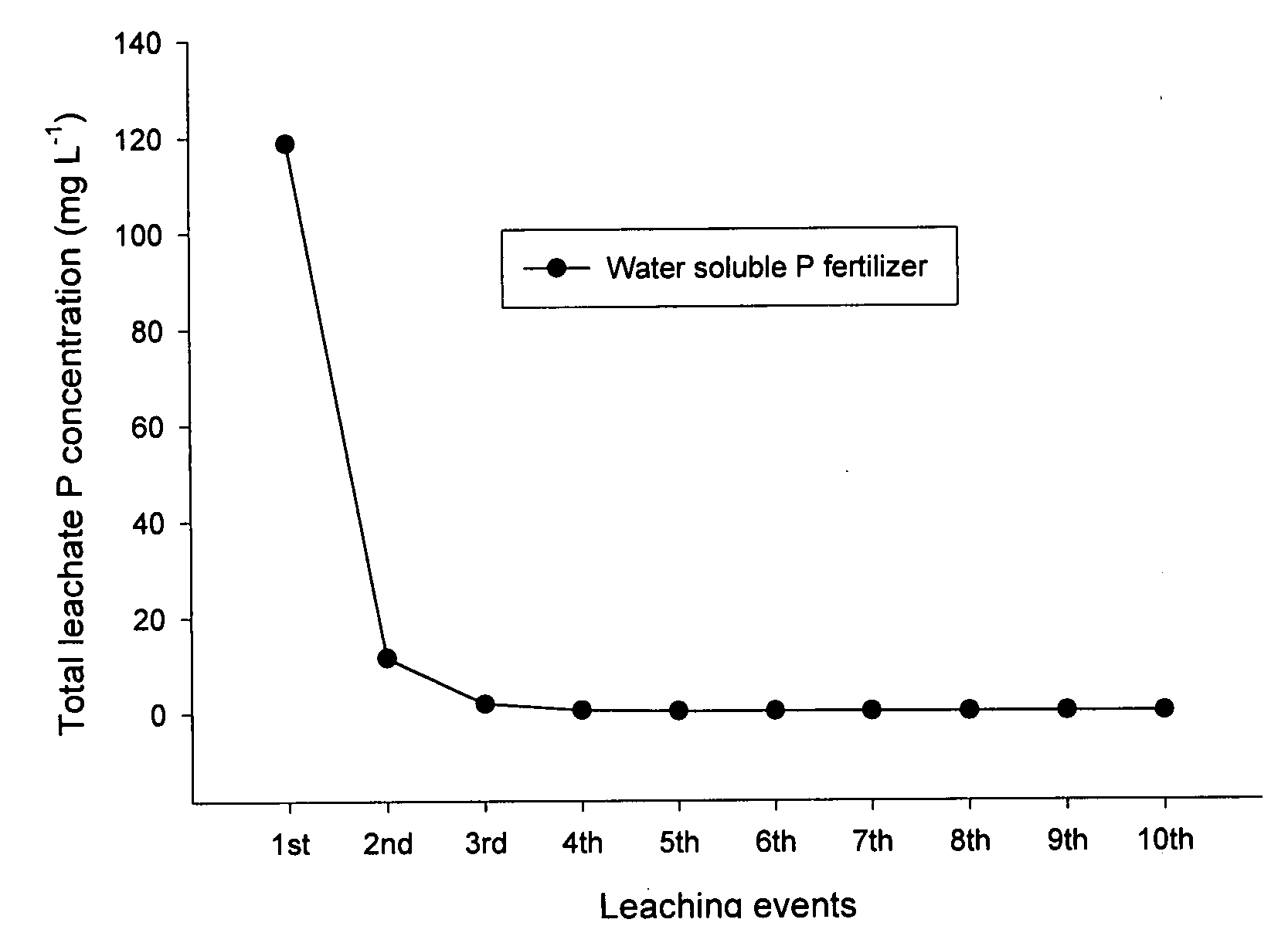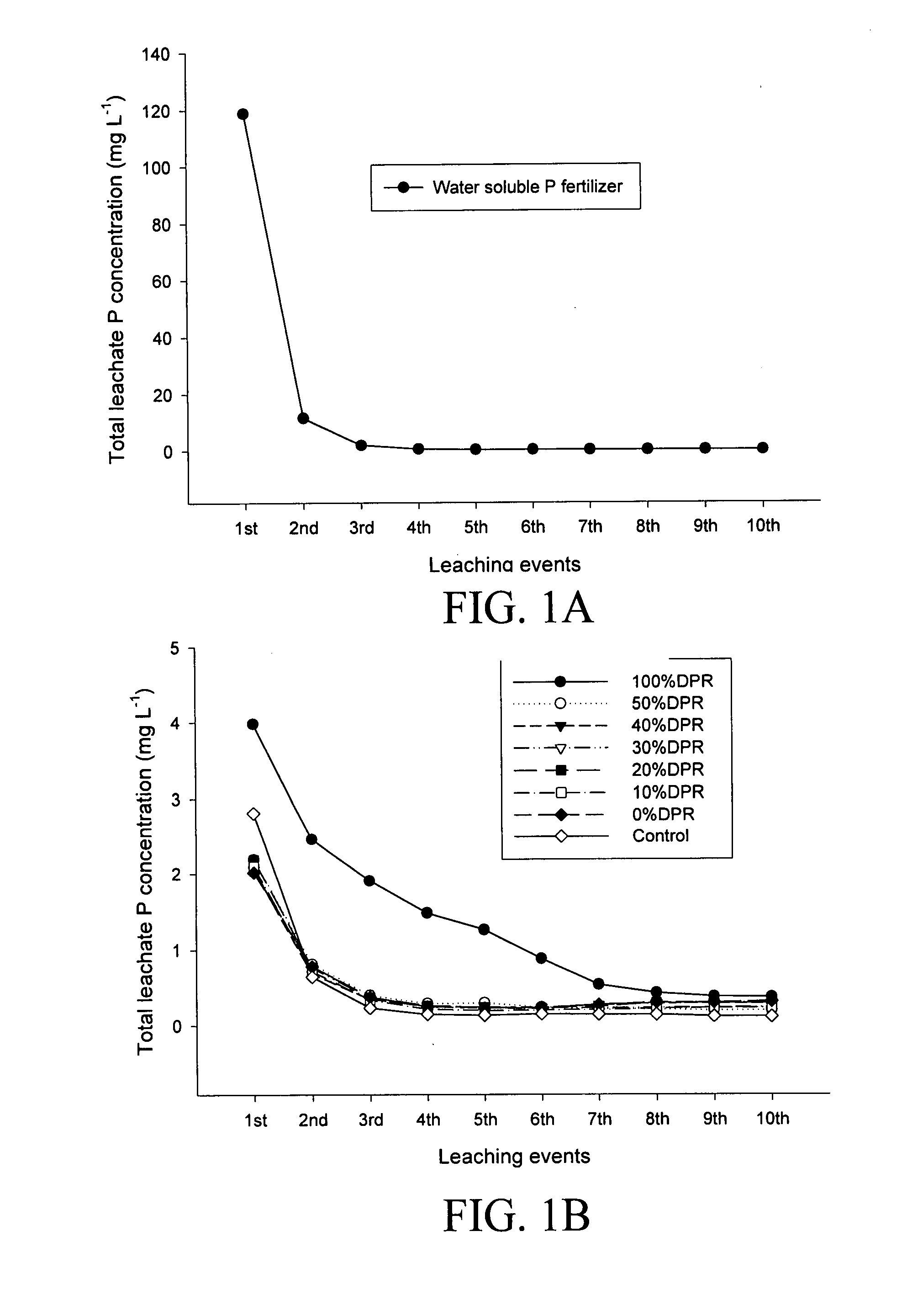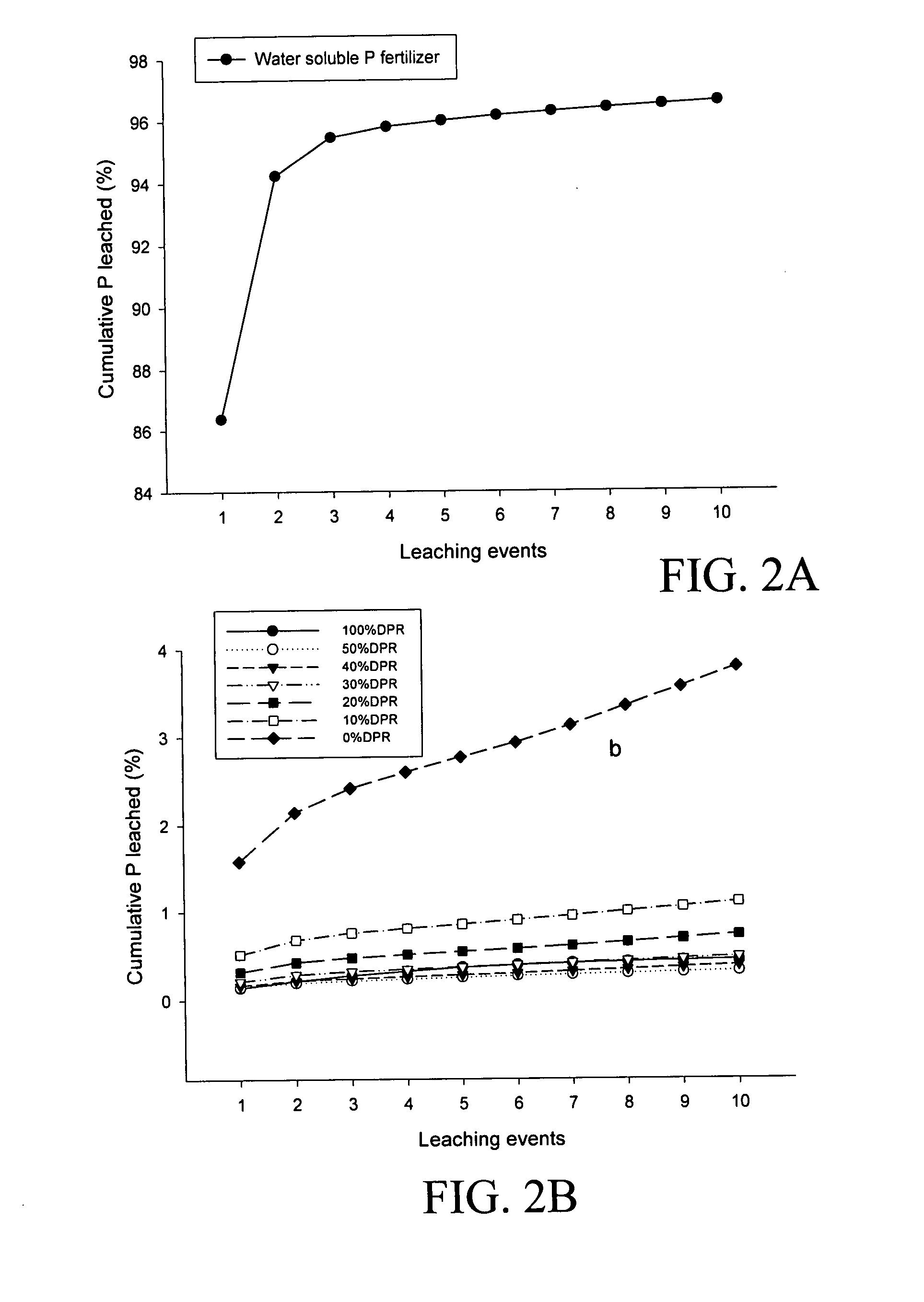Materials and methods for preparing dolomite phosphate rock-based soil amendments and fertilizers
a technology of dolomite phosphate and soil amendments, which is applied in the direction of magnesium fertilisers, calcium fertilisers, agriculture, etc., can solve the problems of contamination of aquatic systems, high organic matter and nutrients of difficult plant cultivation in soils with very low organic matter and nutrients, etc., to achieve neutralizing soil acidity, high dry matter yield, and improved plant nutrition conditions
- Summary
- Abstract
- Description
- Claims
- Application Information
AI Technical Summary
Benefits of technology
Problems solved by technology
Method used
Image
Examples
example 1
Materials and Methods
Soil and N-VIRO-SOIL™-Based DPR Fertilizers
[0063]A typical acidic sandy soil (Wabasso sand 96.1%, silt 2.3%, and clay 1.6%) classified as hyperthermic Alfic Haplaquods, was collected at the 0-30 cm depths in Fort Pierce, Fla. Wabasso sand is a representative agricultural soil of commercial citrus and vegetable production systems in the Indian River area. Selected properties of the soil were 5.0 g kg−1 organic C, 0.23 g kg−1 total N, pH 4.1 (1:1 H2O), pH 3.2 (1:1 KCl), 5.1 mg NaOH extractable P kg−1 soil, 0.6 mg Olsen-P kg−1 soil.
[0064]The DPR source selected for this study was from an IMC facility in Central Florida because of its relatively higher concentrations and availability of phosphorus (P) and other nutrients such as Ca and Mg than other DPR sources. The N-VIRO SOIL™ was provided by the Florida division of N-Viro International Corporation, L. P. Company. N-VIRO SOIL™ is composed of biosolids and fly ash (1:1) and has been increasingly used in citrus grov...
example 2
Materials and Methods
Soil and Amendments
[0080]A typical acidic sandy soil (Wabasso sand 96.1%, silt 2.3%, and clay 1.6%) classified as hyperthermic alfic haplaquods, was sampled from the 0-40 cm layer in Fort Pierce, Fla. Wabasso sand is a representative agricultural soil of commercial citrus and vegetable production systems in this area. The collected soil was air-dried and passed through a 2.0 mm sieve. Selected properties of the soil were 5.0 g kg−1 organic C, 0.23 g kg−1 total N, 4.2 pH (1:1 H2O), 3.2 pH (1:1 KCl), 5.1 mg NaOH extractable P kg−1 soil, 2.6 mg Olsen-P kg−1 soil, 27 kg g−1 microbial biomass C, and 0.38 cmole kg−1 1.0M NH4OAc extractable (Ca+Mg).
[0081]The DPR and N-VIRO SOIL™ were collected from an operation phosphate mine in Central Florida and Florida N-Viro International Corporation, respectively. The DPR material was ground to <0.149 mm for chemical analysis and following studies. The pH, electrical conductivity (EC) and nutritional composition of the amendments...
example 3
[0101]The major objective of this study was to investigate the leaching potential of heavy metal from sandy soil amended with DPR / N-VIRO SOIL™ mixtures. The results were expected to provide helpful information for application of the DPR / N-VIRO SOIL™ mixtures of the invention in field.
Materials and Methods
Soil and N-VIRO SOIL™-Based DPR Fertilizers
[0102]A typical acidic sandy soil (Wabasso sand 96.1%, silt 2.3%, and clay 1.6%) classified as hyperthermic Alfic Haplaquods, was collected at the 0-30 cm depth in Fort Pierce, Fla. Selected properties of the soil were showed in Table 8. The pH was measured in water at the soil:water ratio of 1:2 (w / w) using a pH / ion / conductivity meter (Accumet Model 50, Fisher Scientific Inc. Atlanta, Ga.). Total organic C were determined by combustion using a CN analyzer (Vario Max CN, Macro Elemental Analyzer System GmbH, Hanau, Germany). Particle size distribution was determined by the pipette method (Andreasen, AHT, “The fineness of solids and the tech...
PUM
 Login to View More
Login to View More Abstract
Description
Claims
Application Information
 Login to View More
Login to View More - R&D
- Intellectual Property
- Life Sciences
- Materials
- Tech Scout
- Unparalleled Data Quality
- Higher Quality Content
- 60% Fewer Hallucinations
Browse by: Latest US Patents, China's latest patents, Technical Efficacy Thesaurus, Application Domain, Technology Topic, Popular Technical Reports.
© 2025 PatSnap. All rights reserved.Legal|Privacy policy|Modern Slavery Act Transparency Statement|Sitemap|About US| Contact US: help@patsnap.com



